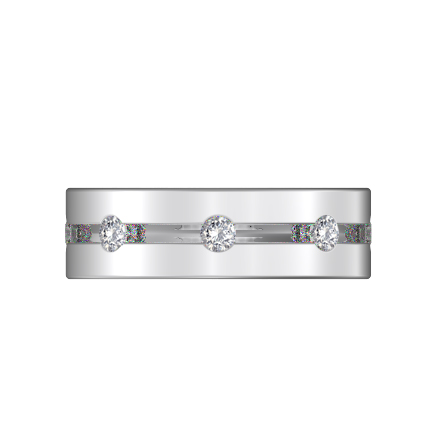Neutral colors are hues that coordinate with every shade. With clothing, these are white, black, beige and so on. In jewelry, the most common of these shades are light grey metals and colorless diamonds. Many precious metals come in these hues, though some are more popular for diamond rings than others.
 Silver is closely associated with white grey metal, to the point they’re described as “silvery.” Like other noble metals, it’s resistant to oxidation and other damage. It does however tarnish over time and requires cleaning to restore its shine. Though jewelry made from this material is still popular, modern diamond bands are often made from other things.
Silver is closely associated with white grey metal, to the point they’re described as “silvery.” Like other noble metals, it’s resistant to oxidation and other damage. It does however tarnish over time and requires cleaning to restore its shine. Though jewelry made from this material is still popular, modern diamond bands are often made from other things.
Platinum’s name is derived from the Spanish “little silver,” due to its color. Unlike its namesake, it doesn’t acquire a patina over time. It’s extremely ductile, and can be shaped into designs that might be too complex for other metals. Diamonds and platinum can combine into delicate designer engagement rings.
Other neutral precious metals may not be popular on their own. Rhodium and palladium belong to the platinum group of elements, have similar coloring and different properties. The former is difficult to work with. When used, it’s in the form of electroplating to protect silver from tarnish or brighten jewelry. Palladium is malleable and sometimes used on its own for jewelry. However, it’s more often mixed with other metals.
White gold is an alloy of gold and metals which lighten its color, such as palladium or zinc. These combinations blend the malleability of gold with enough hardness to make it durable for wear. White gold rings are popular with diamonds as engagement rings and wedding bands.





